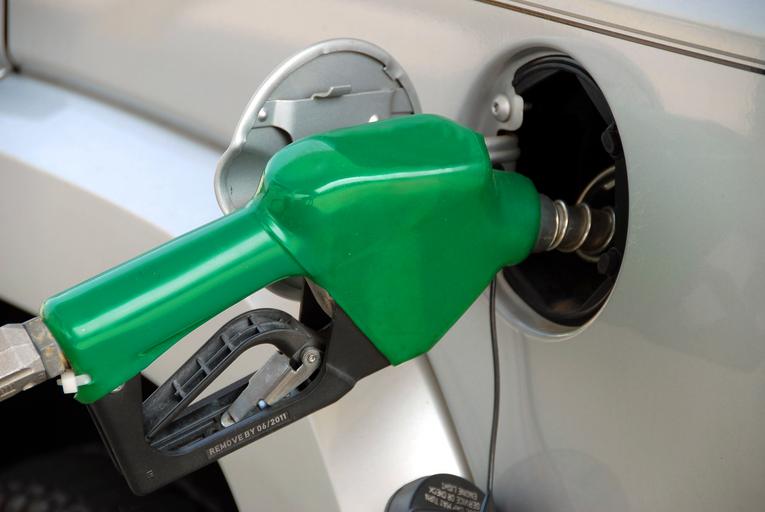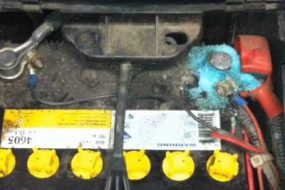
Flex Fuel Vehicles are widely known for their ability to run on more than one gas. You are able to switch between gasoline as recommended by the manufacturer.
Although flex-fuel vehicles have more than one gas, you should know that there are some types of gas that won’t work well in it. Therefore, what kind of gas can I put in a flex fuel vehicle?
You can put regular gas and any blend of gasoline and ethanol in the flex fuel vehicle because they are designed to run on a variety of ethanol-gasoline blends, including E85 (85% ethanol, 15% gasoline) and regular gasoline (E10 or lower).
What is a Flex Fuel Vehicle?
Flex Fuel Vehicles also known as ‘Flexible Fuel Vehicle’ or ‘Dual -fuel Vehicle’ are vehicles whose internal combustion engines are designed to run on more than one fuel, usually, they can operate on any blend of gasoline and ethanol (gasoline-ethanol blend) and only gasoline.
The flex-fuel vehicle is factory made therefore car owners may not really know they own a Dual-fuel vehicle and that they can choose between gasoline and gasoline-ethanol blends to use in the car.
They are similar to the normal gasoline-only vehicles except for some engine and fuel system modifications. The good thing about the FF Vehicle is there is really no loss of performance when there is a switch from gasoline to a gasoline-ethanol blend.
What Kind of Gas Can I Put in a Flex Fuel Vehicle?
According to the design made by the manufacturer, Flex Fuel Vehicle should use regular unleaded gas and a blend of gasoline and ethanol.
- E85: This is a blend of 85% ethanol and 15% gasoline. Flex fuel vehicles can run on E85 without any modifications. It’s important to note that E85 has a lower energy content than gasoline, so your vehicle may have reduced fuel economy when running on E85.
- Gasoline (E10 or lower): You can also use regular unleaded gasoline with an ethanol content of up to 10% (E10) or lower in a flex fuel vehicle. Most gasoline sold in the United States contains up to 10% ethanol, and this is generally acceptable for flex-fuel vehicles.
Regular unleaded gas is gasoline with an octane level of 87, it is said to be unleaded because no lead component is present in it which makes it less hazardous to health and better for the environment.
Regular gas can be leaded or unleaded, the advisable one to use in a flex fuel vehicle is the regular unleaded gas. Gasoline and ethanol (gasoline-ethanol) are other kinds of gas that can be used in a flex fuel vehicle.
The mixture of gasoline and ethanol is called E85 or Flex Fuel, this blend contains 51% to 83% ethanol. The percentage of ethanol in the mixture makes it qualified to be used as fuel in cars. Also, ethanol is said to have a higher octane number than gas.
Of course, you will have to use either E85 or gasoline in the engine in order to maintain its performance. Using a blend of gasoline and ethanol in the engine completely or to a large extent reduces the tendency of low-grade gas to detonate.
Can You Use Regular Gas in a Flex Fuel Vehicle?
Yes, you can use regular gas in a flex-fuel vehicle.
The flex fuel vehicle is designed to use regular gas or E85 which is an 85% blend of gasoline and ethanol. However, you must ensure that the regular gas you use is unleaded. You can use any type of gas in the FFV except regular unleaded gas and diesel.
Regular gas is a common type of gas used in vehicles with an octane rating of 87, it is a by-product of crude oil and is highly flammable.
There are times when gasoline-ethanol blends are not quite affordable but the car still needs to run. At such times, you can use regular gas without fear of a reduction in the engine performance, the engine will still run fine.
The engine has microprocessors that are able to detect the combinations, fuel contents, and ratios and regulate the fuel injection accordingly.
What is the Best Gas to Use in a Flex Fuel Vehicle?
The best gas to use in the flex fuel vehicle is Flex fuel as the vehicle’s name rightly implies.
Using flex fuel in a flex fuel vehicle may be a car owner’s best option as ethanol, a major component of the gas, is sustainably produced from everyday products such as; corn and sugar. This blend is a good alternative or total replacement for regular gas.
However, the best type of gas to use in a flex-fuel vehicle depends on your priorities and the availability of fuel options in your area.
For example, if your primary goal is to support renewable and domestically produced fuels, and you’re concerned about reducing greenhouse gas emissions, E85 can be a good choice.
E85 has a higher ethanol content, which can help reduce reliance on fossil fuels. However, the only disadvantage to this is that it provides lower fuel efficiency compared to gasoline, so you may need to refuel more frequently.
On the other hand, if you prioritize fuel efficiency and convenience, you can use regular unleaded gasoline with an ethanol content of up to 10% (E10) or lower.
Some flex fuel vehicle owners go to the length of opting for ethanol blends that are not as high as E85, such as E30 or E50 simply because it can offer a balance between good gas mileage and ethanol content.
Can you Mix Unleaded Gas and Flex Fuel?
Yes, you can mix unleaded gas (regular) and flex-fuel.
For the mix to be possible and not cause any damage to the car, it must be done in a flex fuel vehicle or any vehicle with such recommendations.
Mixing unleaded gas with flex fuel and using it what the engine needs, the good thing is you do not necessarily have to be cautious of the percentage of unleaded gas and E85. Whatever percentage you choose to use as long as it is not less than 85% is fine.
Using a mix of unleaded gas and flex-fuel in a flex-fuel vehicle works well as the engine has sensors with microprocessors that help to adjust the fuel injection and also ensure it is done in time.
If your vehicle doesn’t use flex fuel and you mistakenly mix unleaded gas with flex fuel you should be fine as long as the blend is not more than 15% and you switch back to your regular gas.
Conclusion
Before you decide to mix or use flex fuel in your non-flex fuel vehicle, be sure you are doing the right thing. One way to know is by checking the owner’s manual or asking your mechanic.









